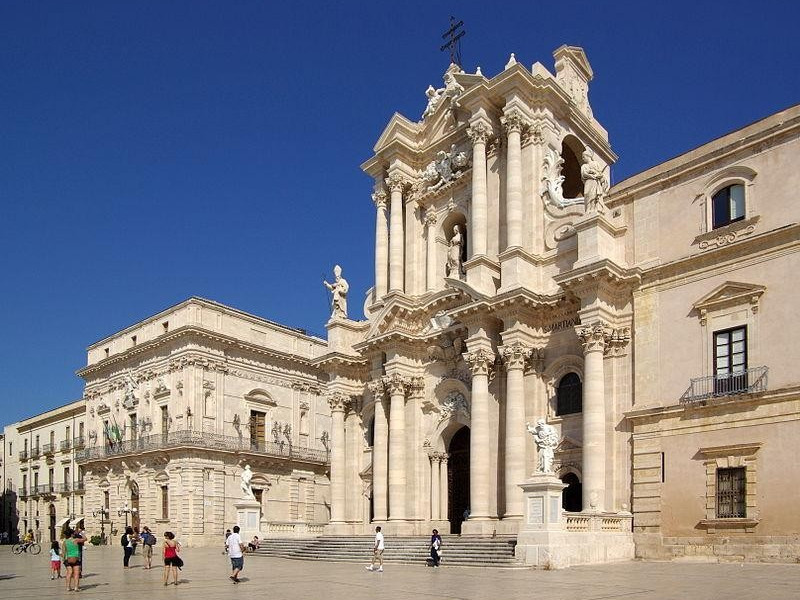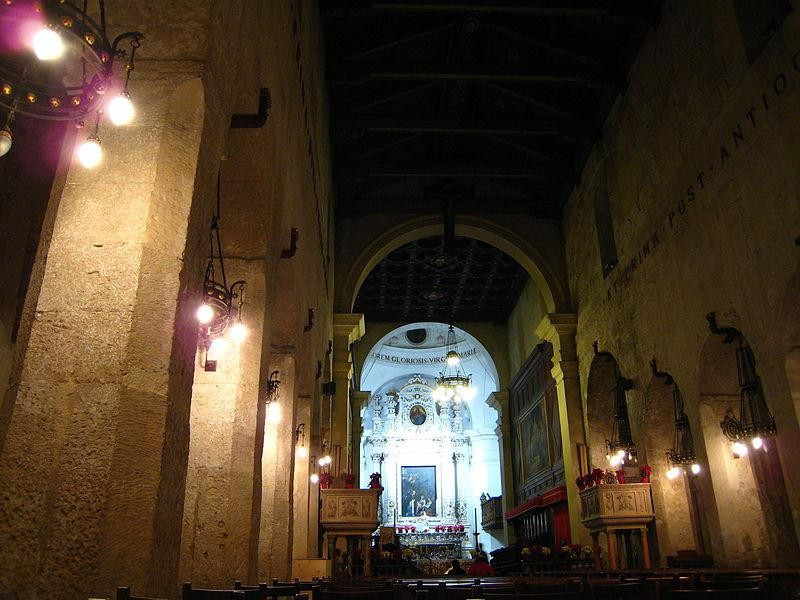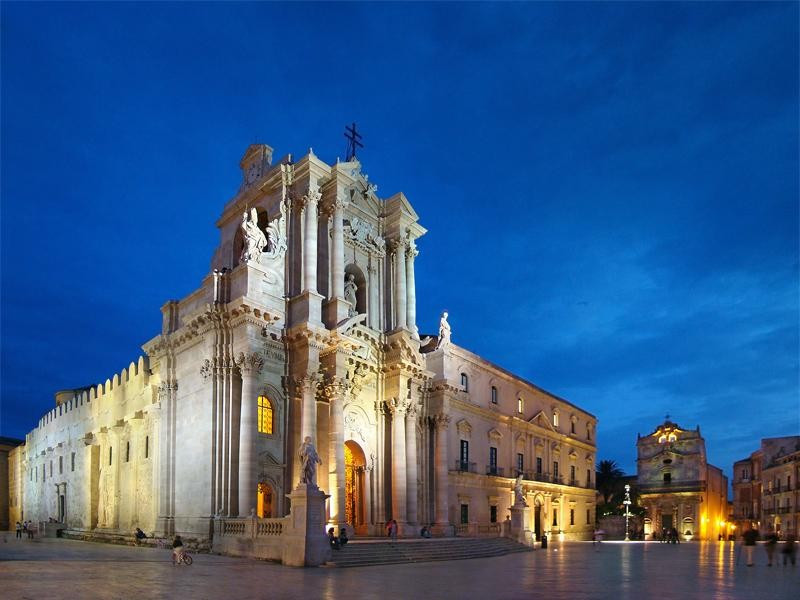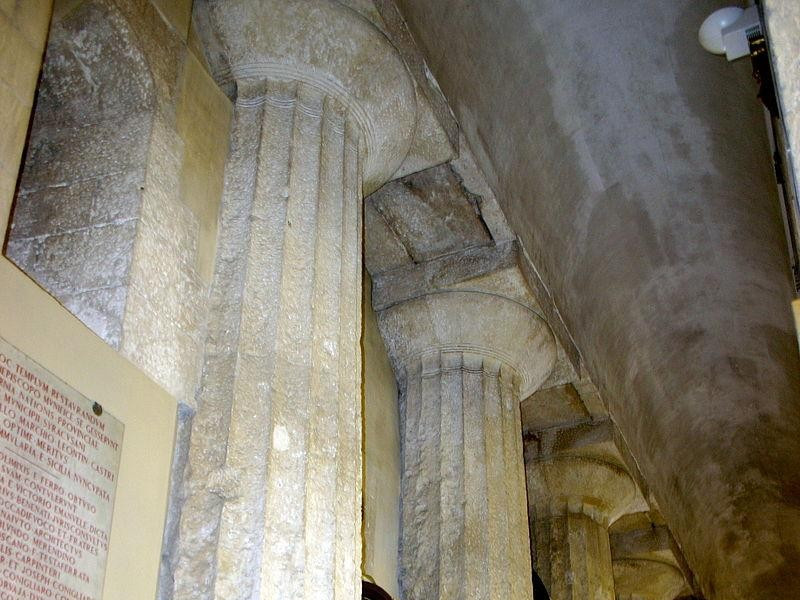Cattedrale della Natività di Maria Santissima (Duomo di Siracusa)
It stands on top of ortigia isle, incorporating what was sacred Temple of Athena, in Doric style. Considered the most important church in Syracuse, it became part of the property protected by UNESCO as "World Heritage". Its style is mainly Baroque and Rococo outside, while inside alternating parts of Greek temple and Medieval, built by Byzantines in seventeenth century. Cathedral holds statues, relics and remains of Saints, martyrs and noble. Its furnishings are works by Italian and foreign artists. Outside, some of the columns of ancient temple are still visible on the left side, nine columns on the right side and two in front of the cell. Byzantine walled space between Doric columns has aisles vaulted ceiling, while the middle one had a ceiling of wood and tiles. With the Arab conquest, in 878, Church was looted and turned into a mosque, only to be returned to the Christian population by Norman King Roger I, in 1093. The architect Andrea Palma began the facade in 1700, as the highest expression of Baroque in the city: it is on two horizontal layers separated by an embattled entablature. The lower level consists of six Corinthian columns that frame central portal, the largest; the higher order consists of four Corinthian columns that support the upper tympanum. At the center, the statue of Immaculate. The statues outside are work by sculptor Ignazio Marabitti. The interior is still original Byzantine. The balustrade and marble floors are polished (end of the eighteenth century). The presbytery is Baroque, work by Pompeo Picherali and Luciano Alì. The Chapel of Our Lady of the Snow opens in the left aisle. The right aisle is made up of several chapels: the first that of the Baptistery, so called because it contains a large Greek baptismal basin; follow St. Lucy's Chapel, of great significance for Syracusans, and that of Blessed Sacrament, the most artistically beautiful because of its frescoes on the dome and architectural decorations. It was built in 1616 by brothers Andrea and Giovanni Vermexio. while the dome was painted by Agostino Scilla. The last chapel, finally, is dedicated to Holy Cross, dating back to 1691.





